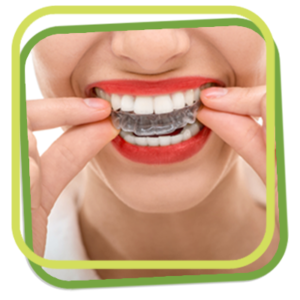What is Early Orthodontic Treatment?
Age 7 is the optimal time to bring your child for their first orthodontic consultation, according to the American Association of Orthodontists. This is because your child’s jaw has developed enough to have some adult teeth present, and to show how further growth and development will continue.
 Parents are often the first to recognize potential orthodontic problems in their children.
Parents are often the first to recognize potential orthodontic problems in their children.
Protruding or crooked teeth, prolonged thumb or finger-sucking, difficulty chewing or biting, or teeth that have been missing for some time but have not yet been replaced by adult teeth – may be signs of potential orthodontic issues. If you see something concerning to you, it is important to follow your instincts and bring your child for a free orthodontic consultation, even before age 7.
Your child’s baby teeth perform a very important role – they help ensure your child’s jaw develops as expected, and baby teeth also serve as “placeholders” for adult teeth. Many parents wonder if their child’s teeth are growing in properly, during that transition phase between when baby teeth are lost and adult teeth grow in.
Phase I Orthodontic Treatment – Early-Intervention (Ages 7-11)
During an early intervention consultation, your child’s orthodontist will examine his or her mouth and oral health, and review with you any concerns they may have about future growth and development, as well as potential early-intervention options, known as Phase I treatment.
Phase I treatment is focused on ensuring that your child’s mouth has room for teeth to grow into their proper places, improving the alignment of the jaws, as well as the relationship between the upper and lower jaws. Phase I treatment can include appliances such as retainers and space maintainers, and interventions that can be done right at home to improve oral health and ideally prevent the need for orthodontic treatment in the future. Phase I may also be recommended if your child’s orthodontist has identified a potential severe issue with the growth and development of the jaw, arch development, possible trauma to protruding teeth, etc.
Phase I interventions may not prevent the need for braces or other future orthodontic interventions, but can help improve the development of your child’s jaw and make any future treatment quicker and easier, preventing or limiting the need for extra time and appliances during Phase II treatment, such as head gear or rubber bands. Phase I can also prevent the need for the extraction of teeth to create “room” in the mouth.
Phase II Treatment (Ages 12-18)
Phase II treatment is most commonly accomplished by Metal braces, clear ceramic braces, or Invisalign®. Phase II can begin once most of the permanent teeth have erupted, and serves to ensure each tooth is properly positioned in relationship to other teeth, and that the jaws are also properly aligned.



